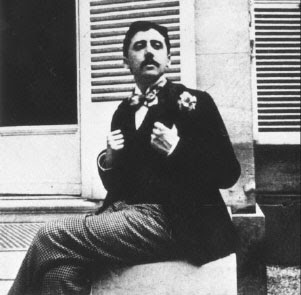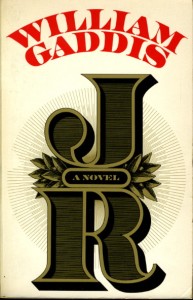Three Quotes from Literature about Saint Simeon Stylites
Simeon Stylites, who spent thirty-six year on top of a sixty-foot pillar in the Syrian desert. For most of that time his body a mass of maggot-infested sores.
The maggots no more than eating what God had intended for them, he said.
– David Markson, Reader’s Block
– – –
And her eagerness to learn the preparations he had set himself to teach her was sometimes pathetically touching, and sometimes it frightened him: touching, delicately absurd for there was no mockery in her when, for instance, she affirmed the dogma of the Assumption of the Virgin with that of Little Eva in Uncle Tom’s Cabin, as the only historical parallel she knew; frightening, when she brought from nowhere the image of Saint Simeon Stylites standing a year on one foot and addressing the worms which an assistant replaced in his putrefying flesh, —Eat what God has given you . . .
– William Gaddis, The Recognitions
– – –
These considerations, which occur to me frequently, prompt an admiration in me for a kind of person that by nature I abhor. I mean the mystics and ascetics—the recluses of all Tibets, the Simeon Stylites of all columns. These men, albeit by absurd means, do indeed try to escape the animal law. These men, although they act madly, do indeed reject the law of life by which others wallow in the sun and for death without thinking about it. They really seek, even if on top of a column; they yearn, even if in an unlit cell; they long for what they don’t know, even if in the suffering and martyrdom they’re condemned to.
Gaddis and J R: Life With, By and Before
J R
William Gaddis
Alfred A. Knopf, 1975
726 pages / $15.16 buy from Dalkey Archive or Amazon
By July I’d completed my yearlong ramble through DeLillo’s oeuvre. It was not one of the hottest summers I remember. I had a room in Crown Heights with a window that faced out to an alley, across which lived a Barbadian family, whom I was awoken by most mornings before biking the six miles, across Brooklyn, over the Manhattan Bridge, through Chinatown, to the parking lot behind the business school next to the library, where I rode the elevator to the tenth floor and worked for eight hours Monday to Friday. I had little idea or direction of what to do next.
I read Wittgenstein’s Mistress in about two sittings, during which I came to vaguely understand the significance of the name William Gaddis. All I knew when I dropped down to the eighth floor one afternoon to pick up the massive copy of The Recognitions was that it included a character who wore a clock as a necklace. The image appeared throughout Markson’s insane novel and recalled Flavor Flav, the refurbished and culturally derided figure of the preceding decade, which seemed enough for me.
It took me three attempts to get through the first ten pages. I’d decided with a friend that we would tackle it simultaneously, but he gave up a quarter way through the first chapter. He explained that he didn’t have any interest in dedicating his respite to a man baptized by Jonathan Franzen as “Mr. Difficult.” As a matter of contention or cultural superiority, or, more likely, personal superiority, I committed to reading the novel to completion and full understanding.
I did so, along the way reveling in what I referred to as the most conscious and hilarious diatribe on art ever penned. I was indoctrinated; by what I read, I found myself deeply shaken and moved.
A month passed. I signed a lease on an apartment with my girlfriend in a neighborhood that used to be a part of Flatbush but is now called Prospect-Lefferts Gardens and enrolled in my penultimate semester of college. I reread Hamlet and Heart of Darkness and The Waste Land. I read for the first time A Portrait of the Artist as a Young Man and Ulysses and “Ulysses” and “Prufrock” and Castle Rackrent. I had few conversations about Gaddis. I went out constantly for a few weeks and stopped. There was the hurricane and I walked across the Manhattan Bridge through a city without electricity to Madison Square Garden. I read Ben Gocker’s absurdly funny Content publication The Pisces on a bus from Philadelphia on three hours of sleep. I felt tired of writing. The insanity of the world seemed more sane. I was bored, watched hours of television. I still do. I’m still bored. And I thought, I think about The Recognitions regularly as this masterpiece of social and artistic criticism, the most effort ever poured into something’s message, which stands to say: It’s not worth it.
January 16th, 2013 / 1:11 pm
HIS STACK OF PALIMPSESTS
on reviewing Gaddis’s The Recognitions1
 The Recognitions
The Recognitions
by William Gaddis
Reissued by Dalkey Archive, 2012
976 pages / $18.95 Buy from Dalkey Archive or Amazon
(Download PDF Version of Review)
| “Of course I like music, but not just to listen to.” – The Recognitions (940) There is, it seems to us, “On the surface! But how much deeper do people go?” |
[1] Throughout this review I will be using quotes from the novel in footnotes to support notes I make. |
| The occasion for this review of The Recognitions, a classic American novel first printed in 1955, is its recent reissue from Dalkey Archive, with an introduction by William Gass. If I were to write a brief synopsis of the plot and major themes of the novel it would be as follows.[2] Now that we have synopsis in hand, let me speak of how that only begins to explain the more substantial elements of The Recognitions, the ones that stick: that it is concerned with originality, reality, and perfection and that these things are often interchangeable; that its characters are all involved in some type of forgery;[3] that we are just layers and accumulations and fragments within the whole, tottering in the field between familiarity and recognition; that art and religion have similar strands and weights of guilt, combatant with truth; and so on. Because of the novel’s size—956 pages—I will stick with the aforementioned elements, with the belief that they get us readers thinking and moving the most; additionally, I will leave Gaddis out of this review— READ MORE > |
December 10th, 2012 / 12:00 pm
Hypothesis: Collaboration and Alienation
 There is a split in experimental fiction, it would seem, which is hardly a split: a duality which is hardly dual. Articulating it, in addition, will not add to or subtract from what I’m provisionally calling “experimental fiction.” I am not going out of my way to break open or unmask a binary which has, till now, subsisted in relative silence. The following is a brief and incomplete diagnosis–neither positive nor negative, or else both at once. Most importantly, perhaps, these are not two distinct regimes (again, a split which is hardly, or is not, a split). Nor should this be taken as a statement of fact, but as a condition which I’ve begun, more and more, to see in what I read.
There is a split in experimental fiction, it would seem, which is hardly a split: a duality which is hardly dual. Articulating it, in addition, will not add to or subtract from what I’m provisionally calling “experimental fiction.” I am not going out of my way to break open or unmask a binary which has, till now, subsisted in relative silence. The following is a brief and incomplete diagnosis–neither positive nor negative, or else both at once. Most importantly, perhaps, these are not two distinct regimes (again, a split which is hardly, or is not, a split). Nor should this be taken as a statement of fact, but as a condition which I’ve begun, more and more, to see in what I read.
I like William Gaddis alot
I’m going to write about books and authors I like, but it won’t be ‘indie-lit,’ because I actually can’t keep up with everything, but I want to write about writing, so I am relying on books/authors I’ve read in the past. Hopefully, this will start a dialog and other contributors will also write posts in similar fashion. The goal is to get people reading what they might not have otherwise. I’m calling this series, “I like [blank] alot.” I encourage everyone to do this.
My first installment will be about William Gaddis. He’s not necessarily my ‘favorite’ writer, because taste is a malleable thing, but I think he’s ‘blown my mind’ the most in everything I’ve read in my life.
These posts will also provide context, like an intro or something. William Gaddis is most commonly grouped with Pynchon, but it’s a one-dimensional association. Gaddis himself said he didn’t like or understand Pynchon. Gaddis can be seen to have bridged Faulkner’s modernist tendencies (e.g. fragmented objectivity) and Pynchon’s post-modernism (he also chronologically fits the bill, writing exactly between the two). Gaddis is also sorta like the american Kafka; the former had an office job at a lawfirm his entire life. Somewhat cliché, but Gaddis hated the lit world back then, and only admitted to liking T.S. Eliot.
In JR, his second book (which in my mind did something no other book as done, which I’ll get into later), he incorporated the vernacular of american bureaucracy so accurately that 50% of the book is [sic]. He has been said to have made notes quoting his co-workers and adding it into his book.
I think JR won the National Book Award, but Gaddis is still ‘under-rated’ in the sense that only sorta crazy people read him. And the award was given ambivalently, like Gravity’s Rainbow, by a committee whom some of which didn’t actually read the book. Gaddis only wrote 4 books, and his last two were inconsequential knock-offs of his first two.
The Recognitions, his first book, also ‘blew my mind,’ and this is how: Gaddis exploited the reader’s tendency to forget things, or the nonchalant faith that the author’s best interest was to ‘take care’ of the reader. He was aware of how ‘fictional reality’ is rendered in the reader’s mind, and purposely fucked with it. Jonathan Franzen, and the contemporary social-realists, don’t like that shit (and I can understand why), but if you like to be fucked with, Gaddis is your man.
Here are some examples of his method:
In The Recognitions, the characters names slowly become interchangeable. Gaddis purposely introduces other characters with almost identical names (Esme, Elise, Elsy, Elly, Elyse, etc.) to confuse the reader. But there is a surreal component to this: the story is about pastiche and the death of ‘the original,’ (a big deal back then, think Warhol) and so the characters ‘caricaturize’ themselves as being copies of one another. Gaddis also does a lot of funny things, like halfway thru the book, the main character disappears and is never mentioned again. The subordinate characters go on and struggle for position as the main character. The book is about a painter who makes more money forging painting than painting his own, though that’s a really shallow description of the book. It’s really about the capacity of ‘character’ in a novel, and the artifice of its rendering. It’s also a haunting love story.
JR is 700 pages of uncited dialog (no “said John,” “replied Lisa,” etc.) The reader basically has to ‘dive in’ and, like some archeologist, retro-actively create a logical world using a paltry set of clues. The more the reader investigates, the more he/she discovers how intricate the novel was written, and how Gaddis leaves not only the right clues, but at the right time. So the ‘writing’ is not actually on the paper, it’s 80% in the reader’s mind. And, yes, he majorly fucks with you: there’s a scene where person A and person B are talking, and person A interrupts and says, “Oh, person C!” followed by descriptions which lead the reader to believe person C rang the door bell—and the reader bases the next 50pgs on that premise. 150 pages later, the reader realizes that person C came down the stairwell when person A says “Oh, person C,” and the person at the door was actually person D, which inverts the entire preceding narrative. Gaddis said he got the idea from T.S. Eliot’s play “The Cocktail Party,” in which a lot of the actor’s dialog takes place off-stage.
He also exploits the inherent fragmented perception that comes from reading fiction, how ‘truth’ (even fictional truth) is impossible. There’s a scene where a man looks in a rearview mirror from a taxi and sees a bouquet of flowers bouncing. It’s described in such a lyrical and memorable way, that it’s embedded in the reader’s memory like some archived signifier, some mental database which glue timelines together. Then some 200 pages later, another character in the book (in the context of the day the taxi ride took place) sees a penny on the ground and attempts numerous times to bend down and pick it up. And he’s holding a bouquet of flowers. These are just one of a myriad of moments when I was like, “holy fuck.”
This post is getting too long. I’ll finish quickly: If you want to be utterly mind fucked for a month straight, and carry the reading experience in your bone marrow forever, read The Recognitions or JR, just get a pen and pad of paper to take down notes. Flow charts and diagrams won’t hurt too.



